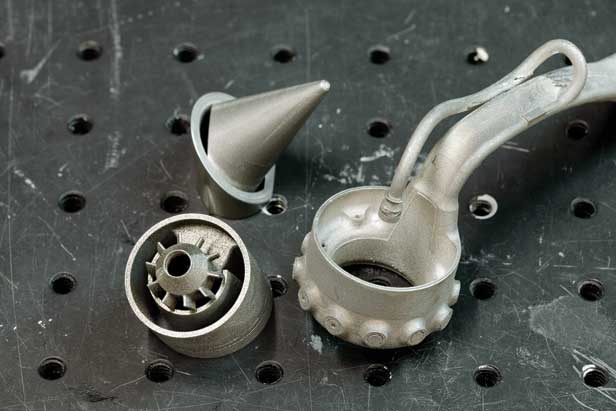Layer by layer
December 23, 2011 | Source: Technology Review
Besides making it more efficient to produce existing parts, 3-D printing techniques make it possible to produce things that weren’t even conceivable before — like parts with complex, scooped-out shapes that minimize weight without sacrificing strength.
And unlike machining processes, which can leave up to 90 percent of the material on the floor, 3-D printing leaves virtually no waste — a huge consideration with expensive metals such as titanium.
And now the technology is advancing far enough for production runs in niche markets such as medical devices. And it’s poised to break into several larger applications over the next several years.
Aerospace companies are at the forefront of adopting the technology, because airplanes often need parts with complex geometries to meet tricky airflow and cooling requirements in jammed compartments. About 20,000 parts made by laser sintering are already flying in military and commercial aircraft made by Boeing.
Automobiles could similarly benefit from lighter parts, and the University of Louisville’s Gornet notes that printing processes could cut the weight of valves, pistons, and fuel injectors by at least half.
